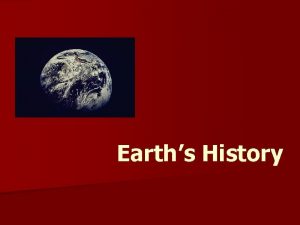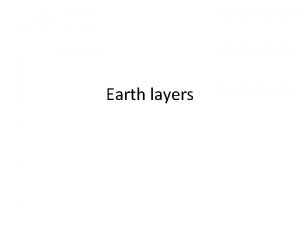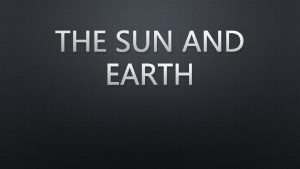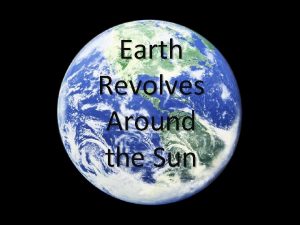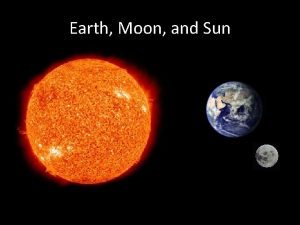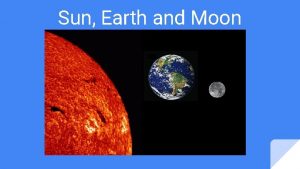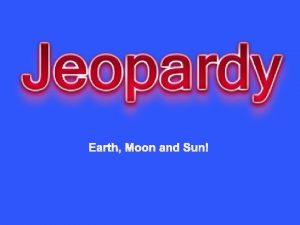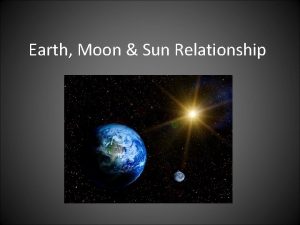Earths Motion Earth The Sun The sun is











- Slides: 11

Earth’s Motion

Earth & The Sun �The sun is the star that is nearest the Earth. (150 million km away). �Sun is 100 times greater than Earth’s diameter. �Sun’s mass is 300, 000 times greater than Earth’s mass.

�Inside the Sun, nuclei of atoms combine, releasing huge amounts of energy. This is called nuclear fusion.

Earth’s Orbit �Earth moves around the Sun in a nearly circular path. �The path an object follows as it moves around another object is an orbit. �The motion of one object around another object is called revolution.

Sun’s Gravitational Pull �The pull of gravity between two objects depends on the masses of the objects and the distance between them. �The more mass or the closer the two objects are, the stronger the gravitational pull.

Earth’s Rotation �As Earth revolves around the Sun, it spins. �A spinning motion is called rotation. �Earth rotates on an imaginary line through its center. This is called the rotation axis. One complete rotation takes 24 hours. This rotation helps produce Earth’s cycle of day and night.

�Each day the sun appears to move from east to west across the sky. Earth rotates from west to east. As a result, the Sun appears to move from east to west across the sky.

Temperature & Latitude �As Earth orbits the Sun, only one half of Earth faces the Sun at a time. �When the surface of Earth is tiled, the sunlight that hits Earth is more spread out and less intense. Earth is most flat at the equator so it’s the warmest. The poles are the most tilted so they are the coldest.

Seasons �The tilt of Earth’s rotation axis, combined with Earth’s motion around the Sun, causes the seasons to change. �Spring and summer occur in the Northern Hemisphere when it receives more energy from the sun than the Southern Hemisphere. �Fall and winter occur in the Northern Hemisphere when it receives less energy from the sun than the Southern Hemisphere.


Solstices, Equinoxes and the Seasonal Cycle �A solstice is a day when Earth’s rotation axis is the most toward or away from the Sun. December Solstice June Solstice �An equinox is a day when Earth’s rotation axis is leaning along Earth’s orbit, neither toward nor away from the Sun. March Equinox September Equinox
 The earth's layers foldable
The earth's layers foldable Earths roation
Earths roation Whats a natural satellite
Whats a natural satellite Home sweet biome crossword
Home sweet biome crossword Pnitogens
Pnitogens Plasticity in earth's layers
Plasticity in earth's layers Whats earths moon called
Whats earths moon called Which layer of the earth slowly moves like putty
Which layer of the earth slowly moves like putty Earths early atmosphere contained
Earths early atmosphere contained Earths layers foldable
Earths layers foldable Earths major crustal plates
Earths major crustal plates Earths orbit seasons
Earths orbit seasons












